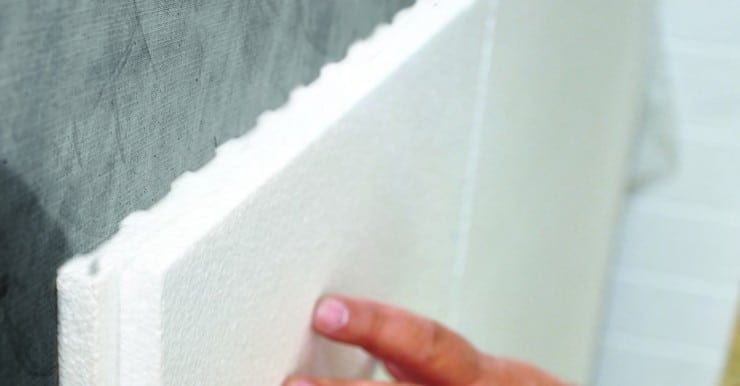Expanded Polystyrene Insulation
There are many ways to insulate, including rigid foam insulation, spray foam insulation, fiberglass batt insulation, blown in cellulose insulation, and more. Here are the typical applications for each type of insulation:
Rigid Foam - Outside walls of homes and below grade.
Spray Foam - Sprayed into the wall cavity, typically in new construction before drywall.
Fiberglass Batt - Rolled into the wall cavity between studs, typically in new construction.
Blown In Cellulose - Popular in remodeling projects; holes are cut in the wall to fill the cavity with insulation, or it is sprayed into the attic.
Although adding insulation to a home can reduce sound transmission and create a quieter interior, rigid foam insulation is not intended for sound dampening. Open cell insulation products are better suited for reducing sound transmission, while closed cell insulation is better for providing insulation value.

What is EPS?
Expanded Polystyrene Insulation, more commonly referred to as EPS, is a closed cell insulation that has been around since the 1950’s. EPS is made of 98% trapped air and only 2% plastic, making it an efficient insulator with a small amount of raw material.
Expanded polystyrene is very versatile because it can be molded and cut into different shapes. The most common shape for remodeling and new construction applications if a flat board, but contoured EPS has also become popular in insulated vinyl siding. The contoured EPS not only serves as insulation, but also provides increased durability and impact resistance to the siding.
How is EPS Made?
EPS begins as tiny beads of polystyrene, which look like grains of salt. The beads are sent into a mold and expanded many times their original size using steam and pentane until they completely fill the space. Although typically white in color, EPS can feature additives such as colorings or pest deterrents.
If the mold is in the shape of the final product, then the part is removed from the machine and the process is complete. More commonly, beads are molded into a large rectangular block and then cut into the final shape using hot wires.
From there, EPS insulation is then packaged and shipped, or sent through another machine that adheres plastic film facers to the foam. Depending on the particular film used, it can provide enhanced rigidity, reflective properties, printed installation lines and more. Most EPS insulation manufacturers print their brand name and important product information on the film.
What are the key features of EPS?
With any insulation, energy efficiency is the primary feature. Energy efficiency of insulation products are measured in “R-value,” or the resistance to heat flow. The higher the r-value, the higher the insulating capability. EPS insulation features an average r-value of 3.6 per inch. When certain types of plastic facers are applied, the composite product can feature an r-value of up to 3.8 at one inch
In addition to providing energy efficiency, EPS without film facers has a perm rating of up to 5.0. A perm rating is the measure of a product’s ability to let water vapor pass through it.
The average family of four generates 4 to 6 gallons of water vapor inside every day. Products with a higher perm rating allow that vapor to escape to the outside, eliminating potential for moisture damage.
When it comes to cost, EPS typically has the lowest price tag of the three insulation types outlined in this article.
EPS Data Summary:
Cell Type: Closed
R-value: 3.6 per inch, 3.8 with film facers
Perm Rating: up to 5.0
Cost: $9 -$13(prices vary based on product specifications)



